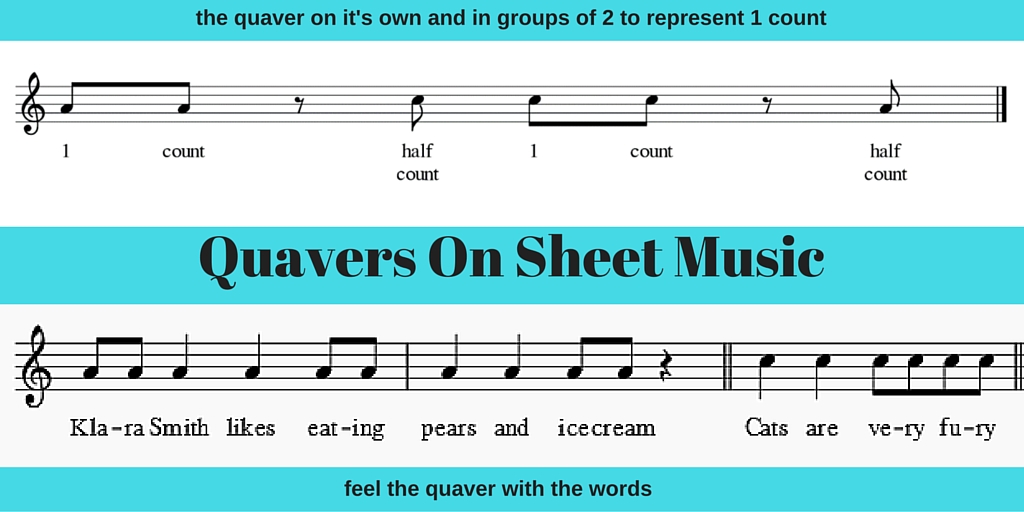

In any case, as time went on, people were beginning to feel hampered by those 6 rhythms they had to use and started to invent new ones. The text goes on at length about perfect moods, major and minor moods that are related to rhythm rather than harmony as we would think about it.
#Quaver music definition plus
So when you have the iambic measure of long plus short in essence you have three beats. The music is still based on the relationship of "longs" and "breves" and the number "3" is quite revered because it constitutes perfection, having a beginning, middle, and end. The next time the book mentions anything we're into the 13th century and music has become more complex. Something that we would write as a dotted quarter note followed by an eighth note, would ahve the dotted quarter (or dotted half or whole note with the same rhythmic relationship between tow notes) as the "long long" because that "long" was. They don't seem to have been as digitally precise as we are these days: the rest of the chapter talks about "long longs" and "ultra long longs" and so on. The breve was half as long as a "long" - makes sense. And the purpose seems to be to be able to designate those "modal rhythms" that are variations of "long short" "short long". Augustine (354 - 430 A.D.) invented (?) two meausrements: a "long" and a "breve". What I'm getting from this text is that at some point in the Middle Ages people finally decided on rhythms, and those rhythms followed modes like I remember from my Latin class: trochaic (long short) iambic (short long) etc., and once you have rhythms you need to define them. The bad news is that the character of those values seem to change as musical concepts develop and change. Mostly I gleaned that "them folk didn't think the way us folk do now." But scattered in various chapters there are a couple of references to breves and so on. I picked up a used book called "Medieval Music" and never did managed to slog my way through the neumes and modes and such. OK, back to the original question: I had a feeling that I had the history of those names somewhere.Someone famous (GB Shaw? Mark Twain?) once said, "The Americans and the English are two peoples separated by a common language." I found a new word, longa, which means a note twice as long as a breve. A written crotchet may look like a hook, if you have a sufficiently vivid imagination.Ħ. It is derived from from Old French crochet, hook, diminutive of croche.

A crotchet is defined as (1) An odd, whimsical, or stubborn notion.

A quaver is defined as (1) A quivering sound. A half note is equivalent to a molecule or a scruple?Ĥ. An online thesaurus gives the following as synonyms or equivalent words: A tiny amount: bit, crumb, dab, dash, dot, dram, drop, fragment, grain, iota, jot, mite, modicum, molecule, ort, ounce, particle, scrap, scruple, shred, smidgen, speck, tittle, trifle, whit. I also find it interesting that in Great britain, a scruple is a (small) unit of fluid measure. I don't believe that a half note is an insignificantly small portion of any other note. (3) An insignificantly small portion or thing. (b) In Great Britain, 1/20 of a scruple (0.0592 milliliters). A unit of fluid measure, as: (a) In the United States, 1/60 of a fluid dram (0.0616 milliliters). A note equivalent to two whole notes doesn't sound brief to me.Ģ.
The word is derived from a Latin word meaning short or brief. Breve is a note equivalent to two whole notes. I did some quick Internet research, and now everything makes even less sense:ġ. Sue said, ".it would make more sense to call crotchets (quarter notes) whole notes because they're each worth one beat." However, in time signatures of x/8, an eighth note is worth one beat.


 0 kommentar(er)
0 kommentar(er)
